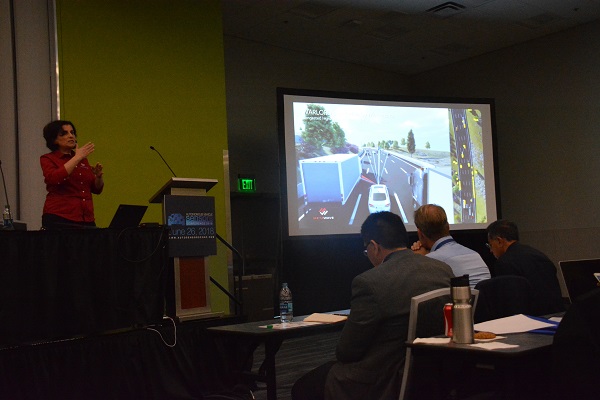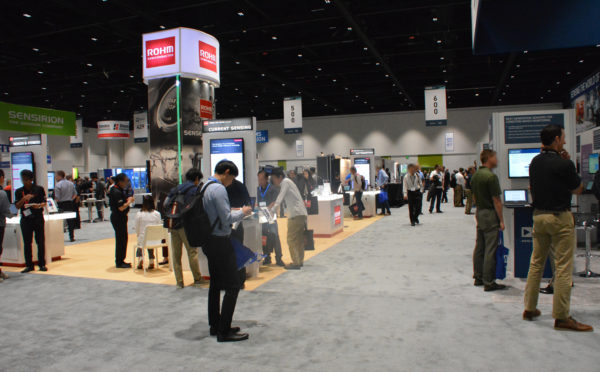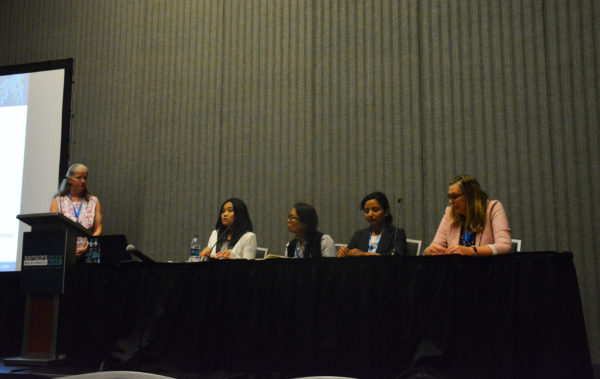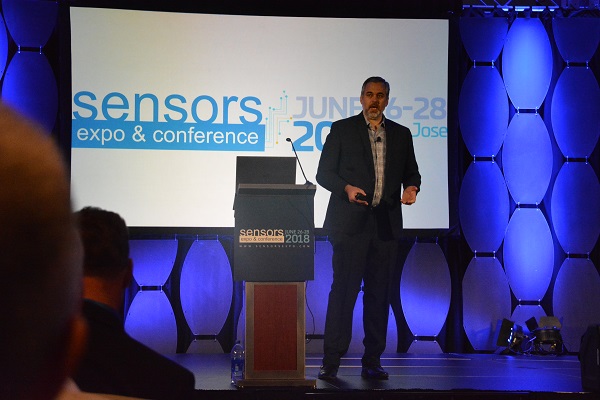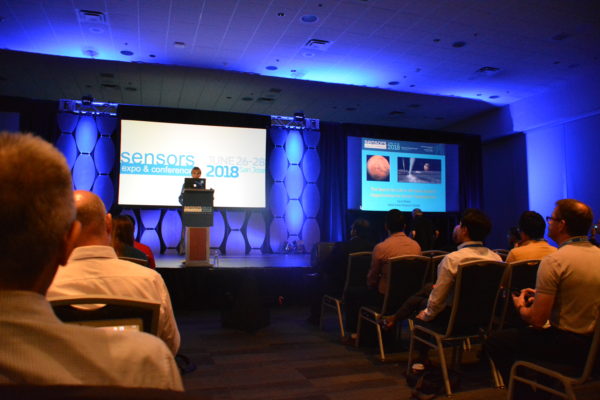by Dot Cannon
A pizza company has a lesson for innovators, on staying relevant.
NASA has three likely areas where, one day, they may discover life in space.
And, while around 21 percent of today’s college graduates in the engineering field are female, that percentage hasn’t increased in fifteen years!
Those are just three of the insights from the 2018 Sensors Expo and Conference, which ran June 27th and 28th at San Jose’s McEnery Conference Center.
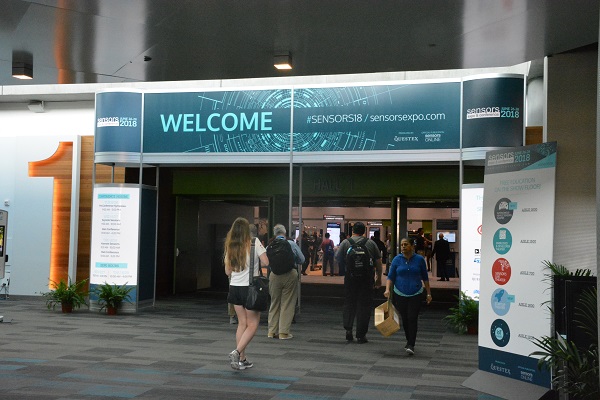
The annual Sensors Expo and Conference, which is the engineering profession’s largest event dedicated to sensors, systems and connectivity, draws attendees from all over the world.
Presentations, discussion panels and hands-on workshops take place throughout the conference, with all-day pre-conference symposia on the Tuesday just prior to the start of the official conference. Generally, these focus on the Internet of Things and the ways sensors are advancing it towards becoming an everyday reality.
New for Sensors 2018
For pre-conference Sensors 2018, a new all-day “Autonomous Vehicle Sensors Conference” explored all aspects of the use of sensors in autonomous-vehicle creation. On Tuesday, June 26th, speakers throughout the day discussed the various challenges of getting vehicles to where drivers can safely go from “hands off” to “minds off” when they travel.
Continuous accurate perception, several speakers said, is a challenge. So is a need to reach five goals–performance, reasonable price, form factor, reliability and availability–before autonomous vehicles become a part of daily life.
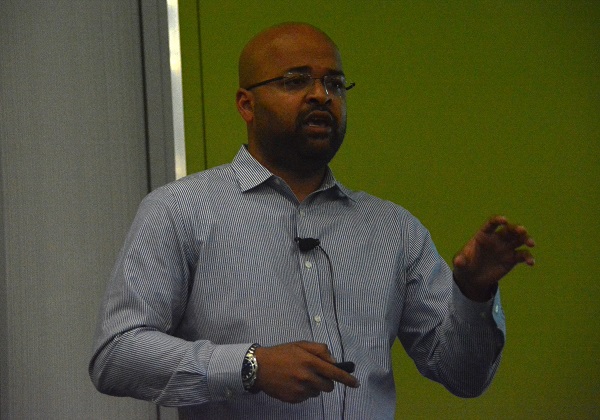
“The road ahead is going to be built on adaptable intelligence, and we still have a ways to go,” commented Dr. Aniket Saha, of ARM, at the conclusion of his presentation.
But this new autonomous-vehicles conference, and Sensors 2018 in general, highlighted the viewpoint that innovation is a journey.
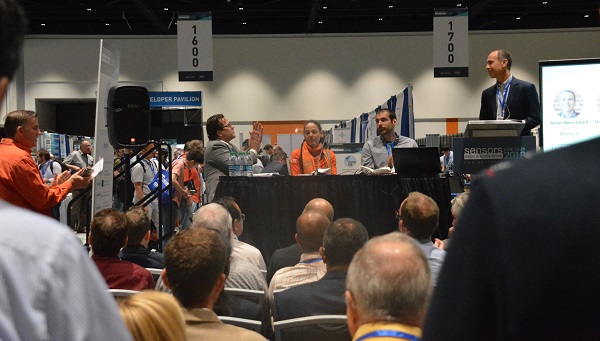
Among the new show additions for 2018 was a new expo-floor stage area, which offered an automotive-industry “startup review” on Wednesday, gave entrepreneurs a chance to share, and fine-tune, their vision for the future. (Additional new offerings for 2018 included an “AI Development Platform” training class from Xilinx, along with an “Innovation in Auto Sensors” session during the Sensors 2018 Conference itself.)
See the scent
And a walk through the Expo exhibits revealed all types of innovation in progress.
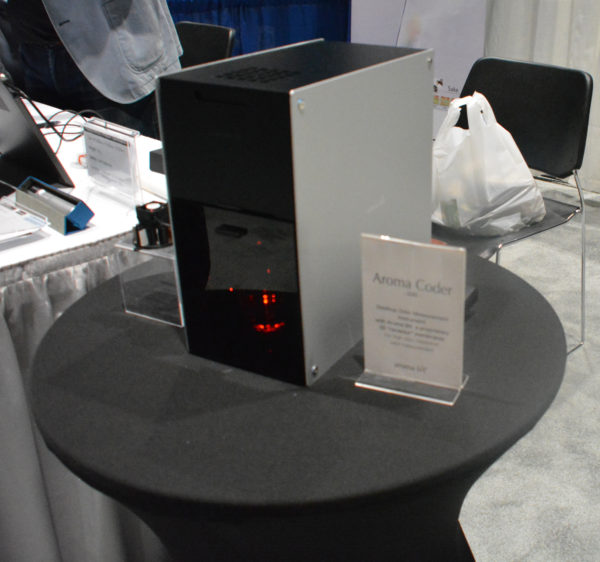
Just one of those favorites: this Aroma Coder, from Aroma Bit, which captures, and digitizes, scent!
Business Development executive Tomi Brooks told us the technology creates a visual representation, similar to an audio waveform, when it records a scent.
As of 2018, Aroma Bit doesn’t yet do “playback”. So far, Tomi says, it can’t give users (for example) a waft of fresh-baked chocolate chip cookies on their favorite bakery’s website. But we wouldn’t be surprised to see the Tokyo-based startup figure out a way to include that capability in the future.
Towards a connected community
The need for social change also came up, during Wednesday afternoon’s Women in Sensors Engineering panel discussion.
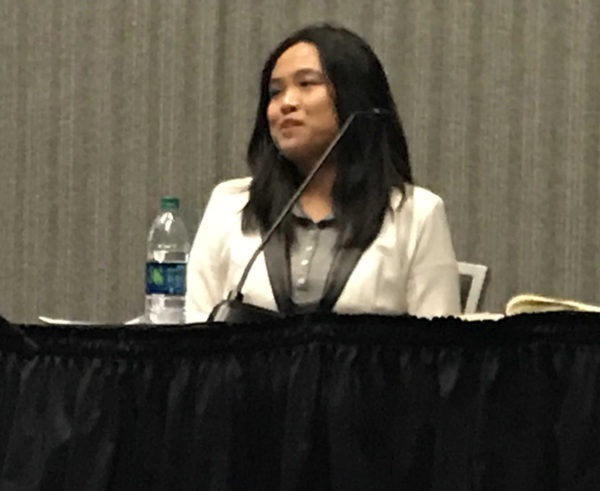
“After only about twelve years, 50 percent of female STEM professionals leave the field for non-STEM careers,” said Lockheed Martin systems engineer Jocelyn Tan. “To empower women to get into the field and stay there, I think it’s all about community.”
The women agreed that social expectations–and sometimes, their own conditioning and fears–presented challenges.
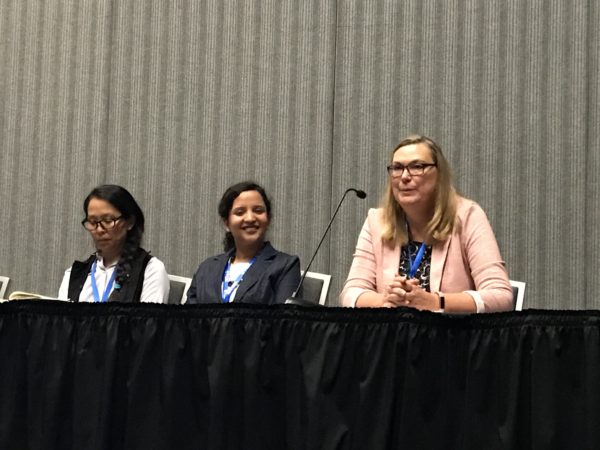
“Why is it OK (for a woman) to become a nurse, and not an engineer?” asked Intel Corporation Principal Engineer Melanie Daniels. “It’s about as much work!”
A pizza company’s digital reinvention
“Digital transformation is a very real trend, and it’s something to pay attention to,” said Dell Technologies’ IoT Strategies and Partnerships Director Jason Shepherd, during his Thursday-morning keynote.
Building an “ecosystem effect”, Shepherd said, was the key to remaining relevant in today’s market. Continuous improvement and relationships with customers were the crucial elements to success.
Shepherd referenced how Domino’s Pizza had put this system into effect.
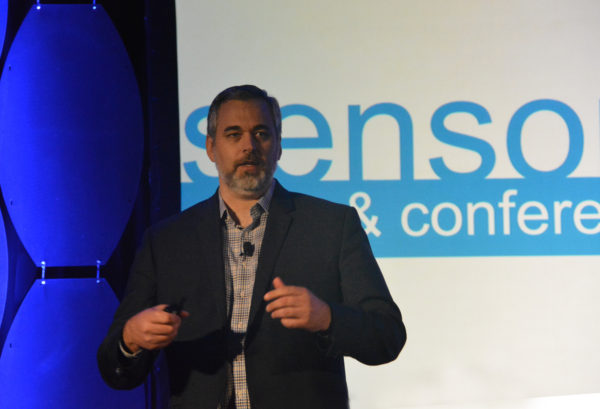
“(In 2008, their stock was worth a couple of bucks. Then, they went digital),” he said.
Domino’s. he continued, had embraced their clients’ use of personal technology–and their stock skyrocketed accordingly.
“(Now) you can tweet and get a pizza. Actually, 60 per cent of their sales come from (digital methods).”
“How you architect things is really, really important. If you can’t get it out fast you’re going to be irrelevant, is the new mindset here.”
Life on other planets?
Another new kind of mindset followed immediately.
“There are three targets in the solar system where NASA can search for life,” said NASA Ames Research Center astrobiologist Dr. Carol Stoker, at the start of her keynote.
Those targets? Mars, Europa and Enceladus.
Dr. Stoker explained that, when the Viking spacecraft landed on Mars in 1976, it found a “false negative” in searching for life. The processes the lander used to extract Martian soil may have actually destroyed organic material. Consequently, scientists concluded that life didn’t exist on Mars.
But then, in 2008, the Phoenix mission discovered habitable conditions in the planet’s ground ice.
And the Curiosity lander led to–no, not discovery of life on Mars.
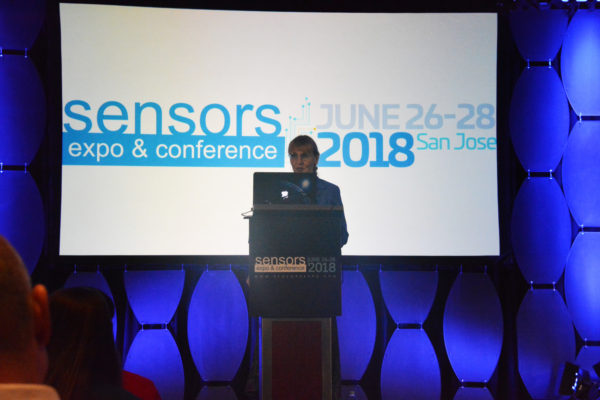
“But we have found (methane gas),” Dr. Stoker said. “We found no evidence of life, either ancient or modern. But we haven’t looked very hard.”
The instruments NASA had sent in search of life so far, she explained, were not equipped to find microscopic fossil life evidence. In addition, since the Viking mission in the 1970s, spacecraft have done no search for modern life.
In addition to further exploration of Mars, Dr. Stoker said NASA was planning a future mission to search for life on Jupiter’s moon Europa.
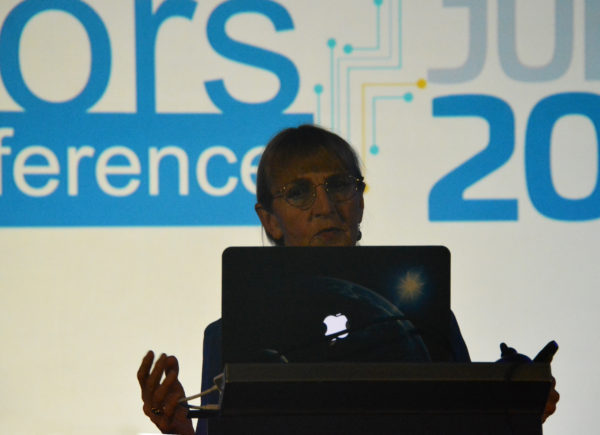
“Europa Lander is going to be tiny,” she explained. “One meter in size.”
And due to the radiation on Europa, the mission will necessarily be short: “Thirty days.”
But of the three targets where NASA scientists may find life in the future, Dr. Stoker continued, the most likely candidate is Saturn’s moon Enceladus. Enceladus, she explained, has geysers which shoot out plumes at 400 meters per second.
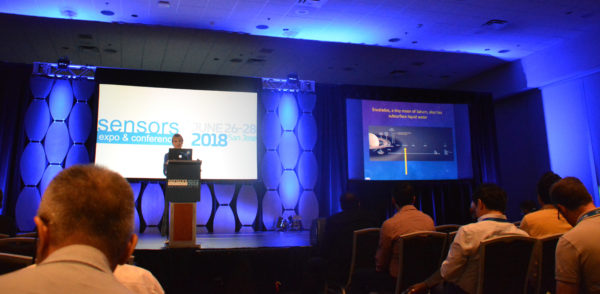
“We know for sure that (Enceladus) is a habitable environment. If you planted (material), it would grow.”
However, no one will be doing that planting tomorrow.
“Missions to Saturn may take more than a decade, and that’s on top of the six years it takes (to develop the technology),” Dr. Stoker said.
“Your children may be (working on future missions).”
Laying the groundwork for “amazing”
So, what might be involved in preparing the NASA scientists, autonomous-vehicle creators and various other engineers who will design the future?
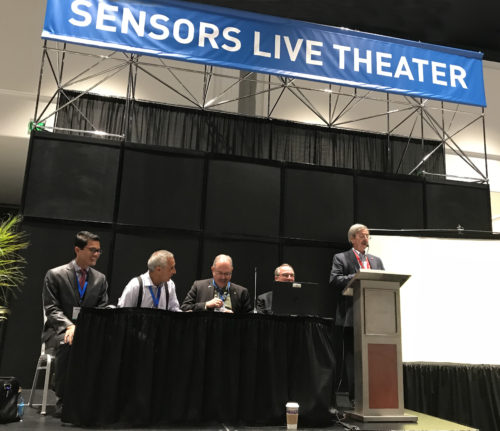
That’s exactly the topic which this “Future of Engineering Education Panel” explored, on Thursday morning.
Moderated by Roger Grace, of Roger Grace Associates, each of the panelists gave a five-minute presentation, then responded to audience questions.
In his presentation, Milwaukee School of Engineering President Dr. John Walz told the audience that enrollment in engineering programs had seen a giant increase. Since 2010, he said, the number of students enrolling in engineering programs had climbed by 43 percent.
Dr. Walz attributed this growth to newer programs, sparking students’ interest during their early educational years.
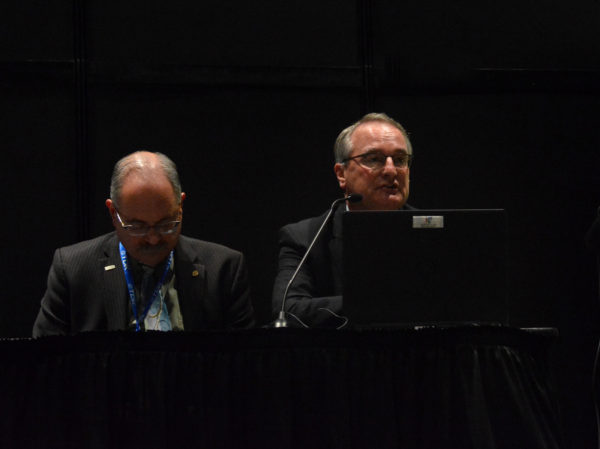
“We’ve seen a huge increase in STEM (education) at the K through 12 levels,” he explained.
But the enrollment news was not all positive.
“African-American (enrollment has) gone down and the only (group that’s had increased enrollment) are Hispanics,” Dr. Walz said.
And female enrollees had not dramatically increased in number recently.
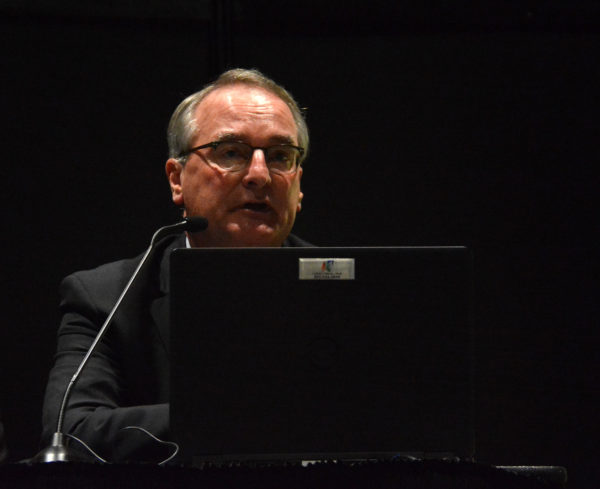
“In 1966, four out of every one thousand engineering graduates were female,” Dr. Walz continued. “Fifteen years ago that number climbed to 21 percent, and stayed there. Females are more attracted to professions that help society.
(So, we have a great marketing opportunity.)”
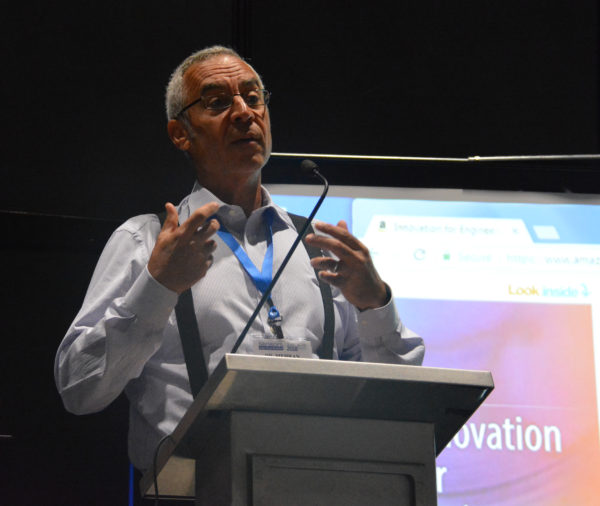
Case Western Reserve University Professor Dr. Mehran Mehregany addressed the problem of relevance. Due to the flood of information currently available to students online, he said, he saw the roles of faculty changing.
“Most faculty are not as good as videos that deliver information,” he said. “So, what is left for us to do? We need to teach innovation.”
Northeastern University Ph.D. Candidate in Mechanical Engineering Suchart Klaikaew the importance of hands-on experience, based on his own education.
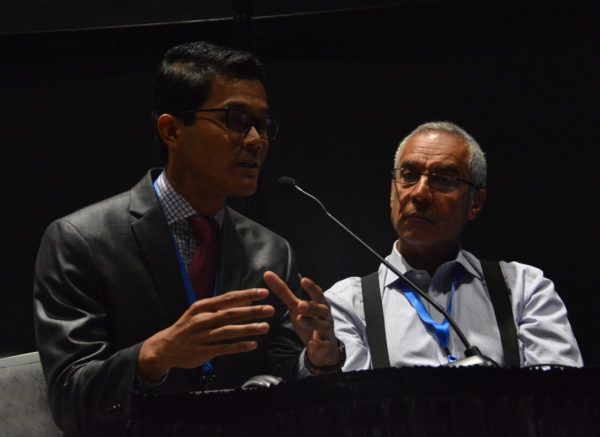
“When I went to work with a startup company, we created a product. The company wanted me to show it to a customer. (Then) we had to modify it, depending on customer feedback and needs.”
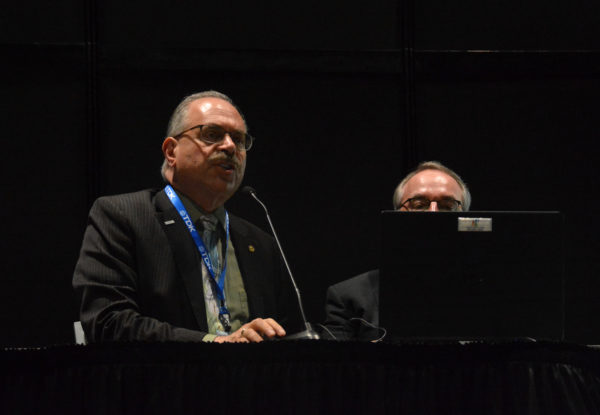
“There’s no such thing as an academic organization that can work without a large amount of (corporate) support,” said UCSD Jacobs School of Engineering Dean Dr. Al Pisano.
Part of that support, he continued, enabled Jacobs School to break engineering education down into small units.
“Over the past few years, we’ve put together agile research centers…The whole game is industry-inspired. Research topics are very important to have.”
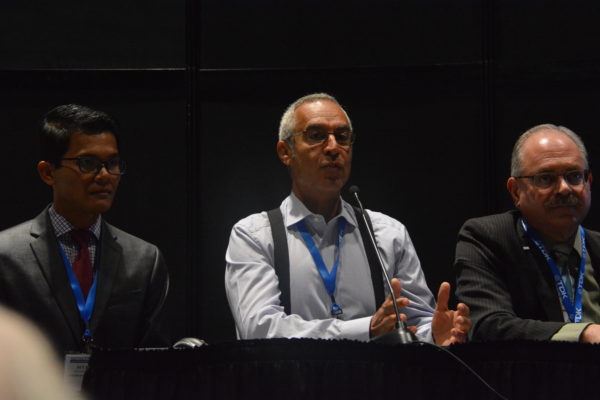
Another area of importance, said Dr. Mehregany, was customization.
“What do I need, right now, to handle the problem…in front of me? I think we need to take into account the student’s personality, instead of (just assigning bucket electives).”
Entrepreneurship, the panelists agreed, was a crucial element.
“The role of the university is to foster entrepreneurship,” said Dr. Walz. “The skills associated with being a good entrepreneur (such as creativity and working with a team) are the skills we need to teach students.”
“Entrepreneurship with us is really big,” said Dr. Pisano. Last year, we had 47 startups from the school.”
The panel concluded, and the time had come for the University Awards Ceremony.
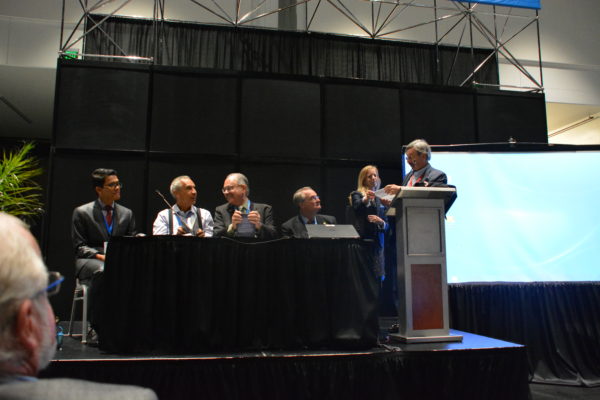
Throughout Sensors 2018, in the University Zone, university teams had displayed their visual presentations, on their research in the sensors industry.
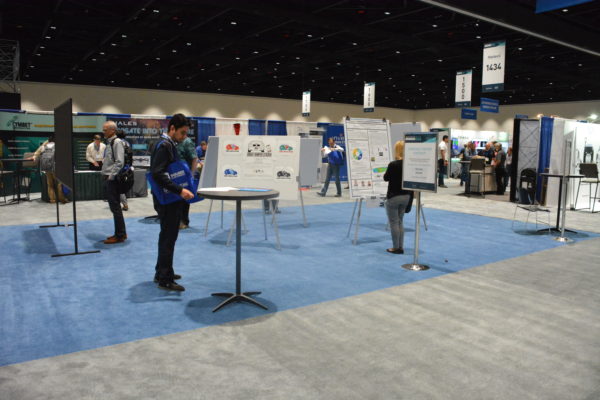
Now, Grace would announce the winner.

And it was…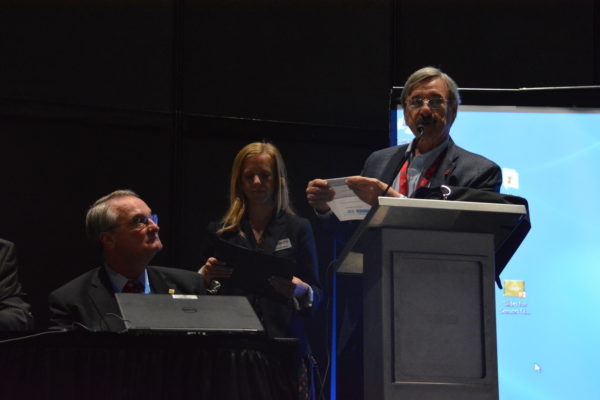
…UC Berkeley!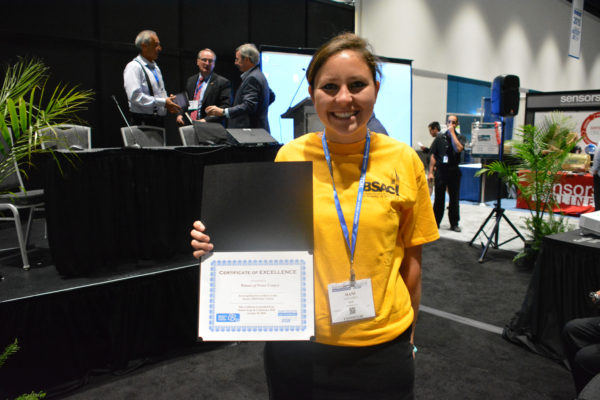
Team member Hani Gomez, UC Berkeley Ph.D. Candidate in Electrical Engineering, told us that Sensors 2018 marked her first time at the Sensors Expo and Conference.
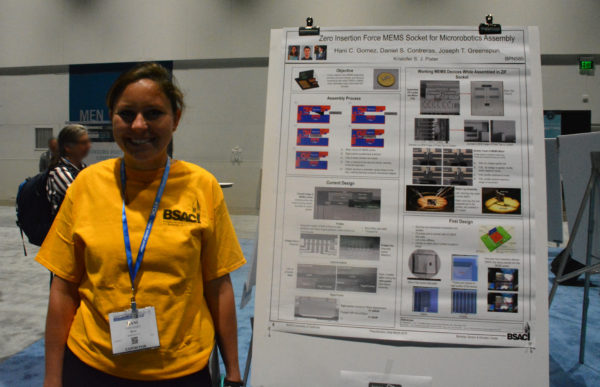
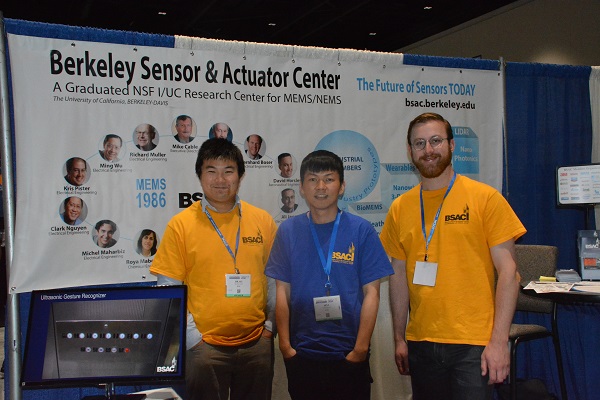
Congratulations to Hani and her team! We’re looking forward to seeing their designs and hearing them speak at future Sensors Expo and Conference programs.
And we can’t help but wonder which of them may wind up designing the NASA technology that’ll explore Enceladus.
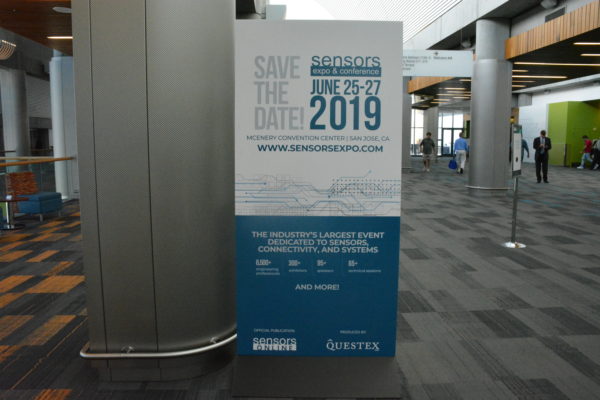
Sensors Expo and Conference, 2018, took place Wednesday morning, June 27th through Thursday afternoon, June 28th, in San Jose’s McEnery Conference Center. Dates have been announced for the Sensors Midwest conference, in Rosemont, Illinois October 16th through 17th, 2018. In addition, the 2019 Sensors Expo and Conference is scheduled for Tuesday, June 25th through Thursday, June 27th, 2019 in San Jose.
Missed our Day One coverage? Here’s the link.

